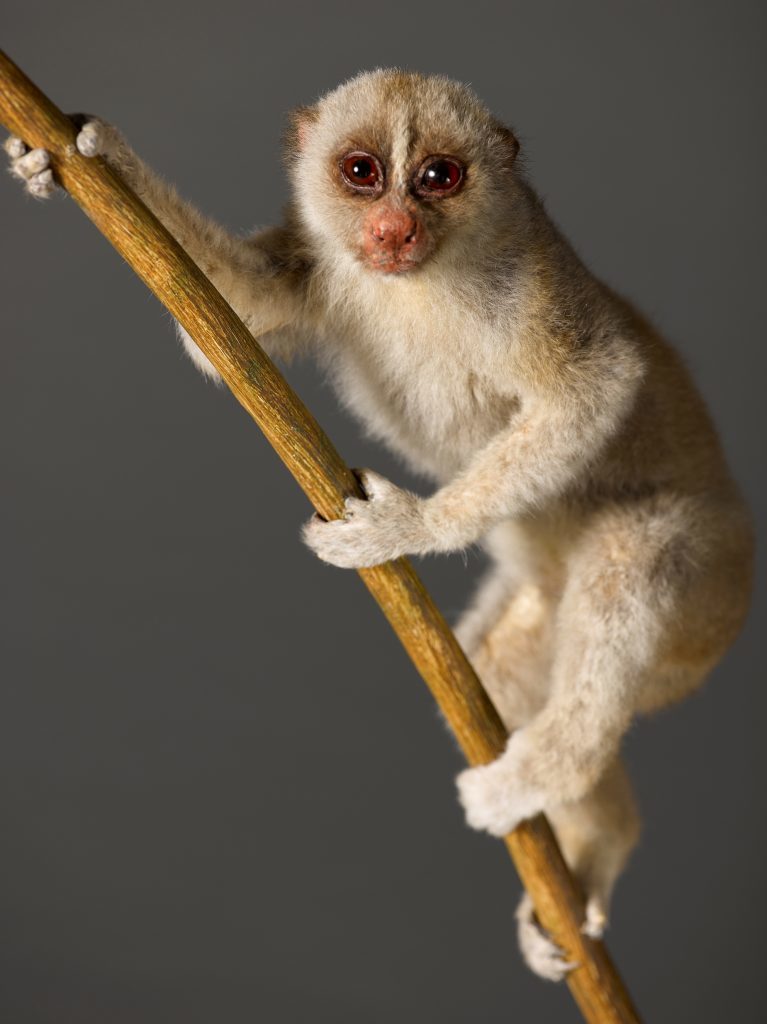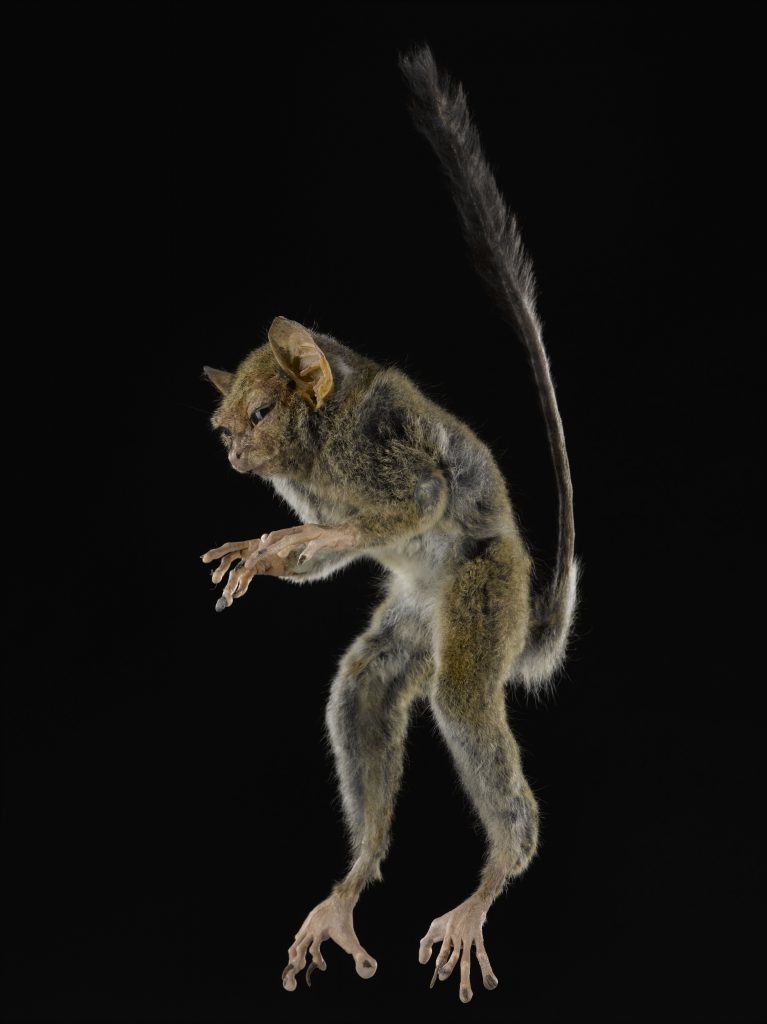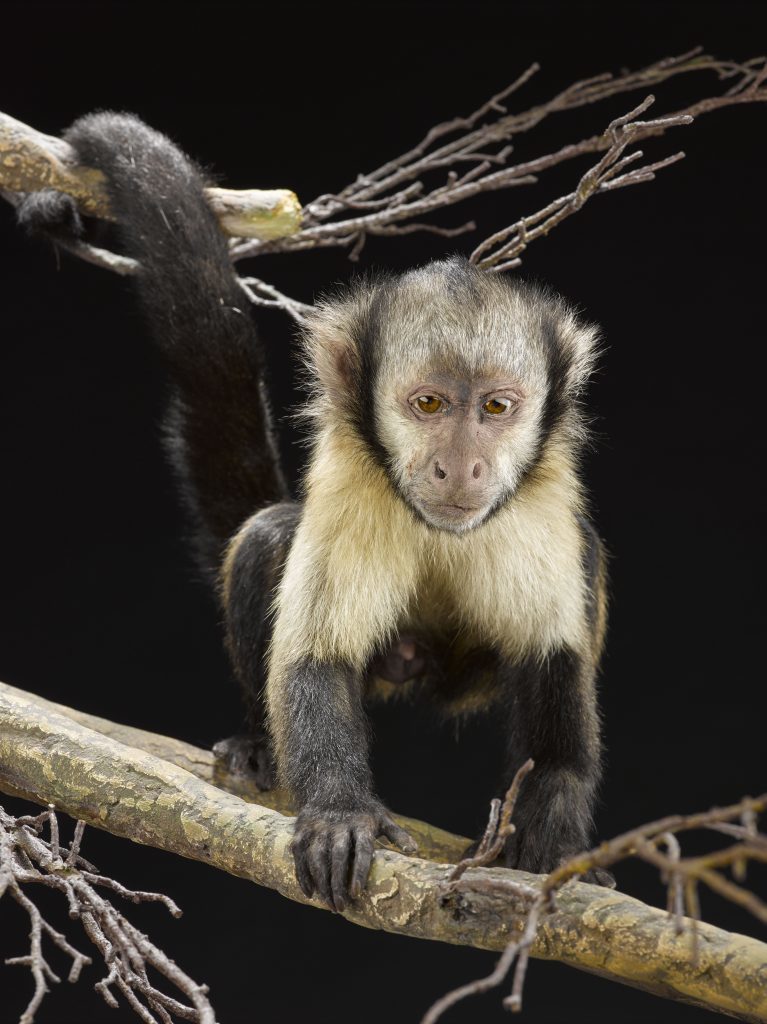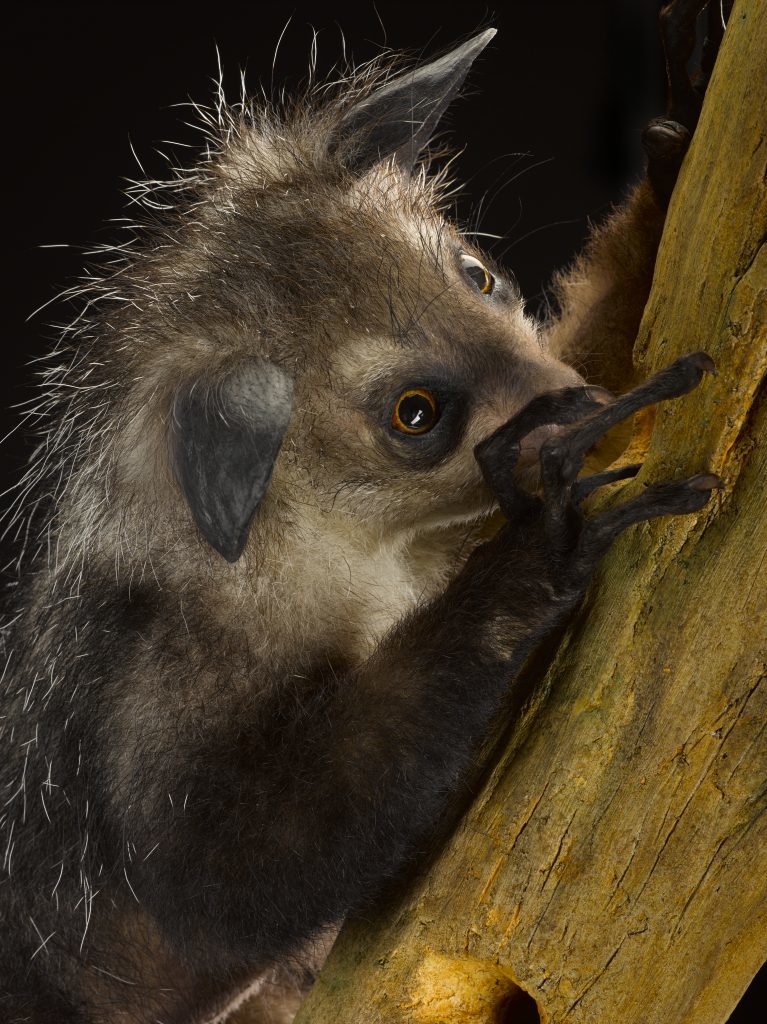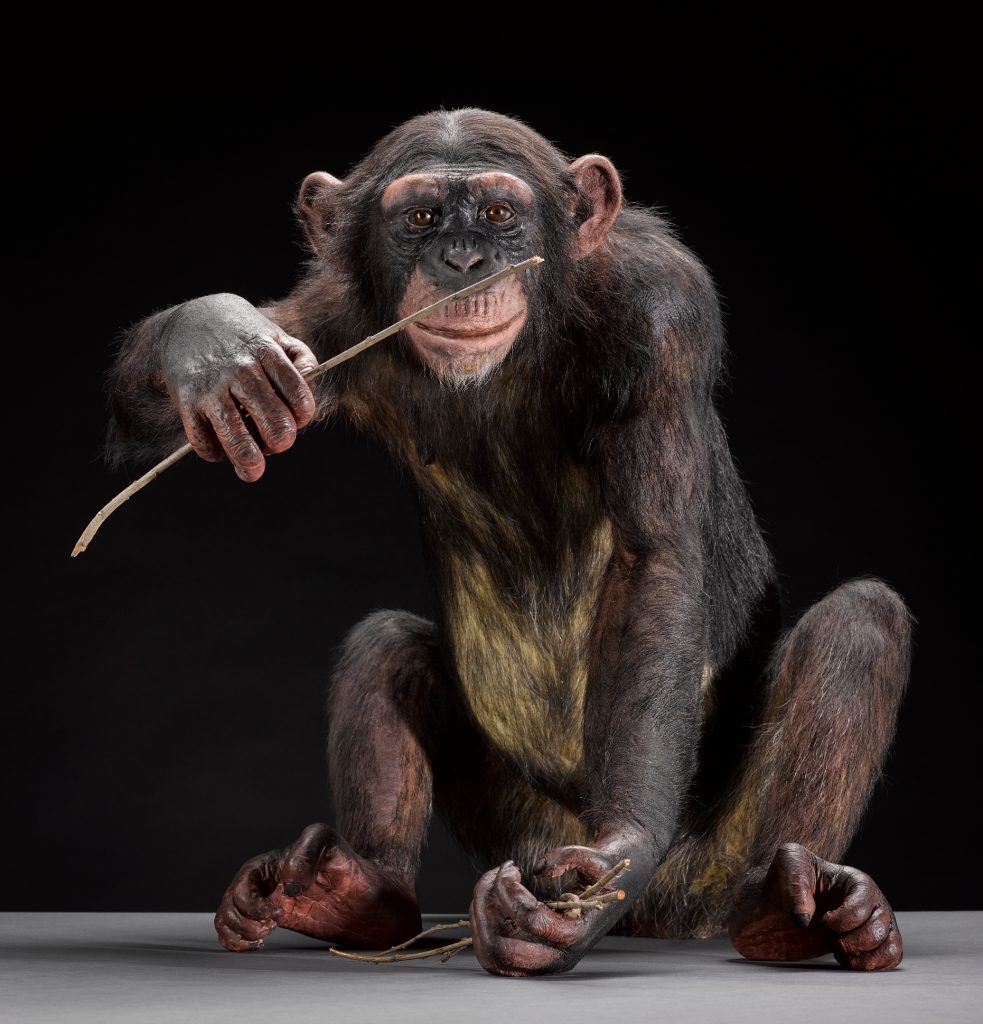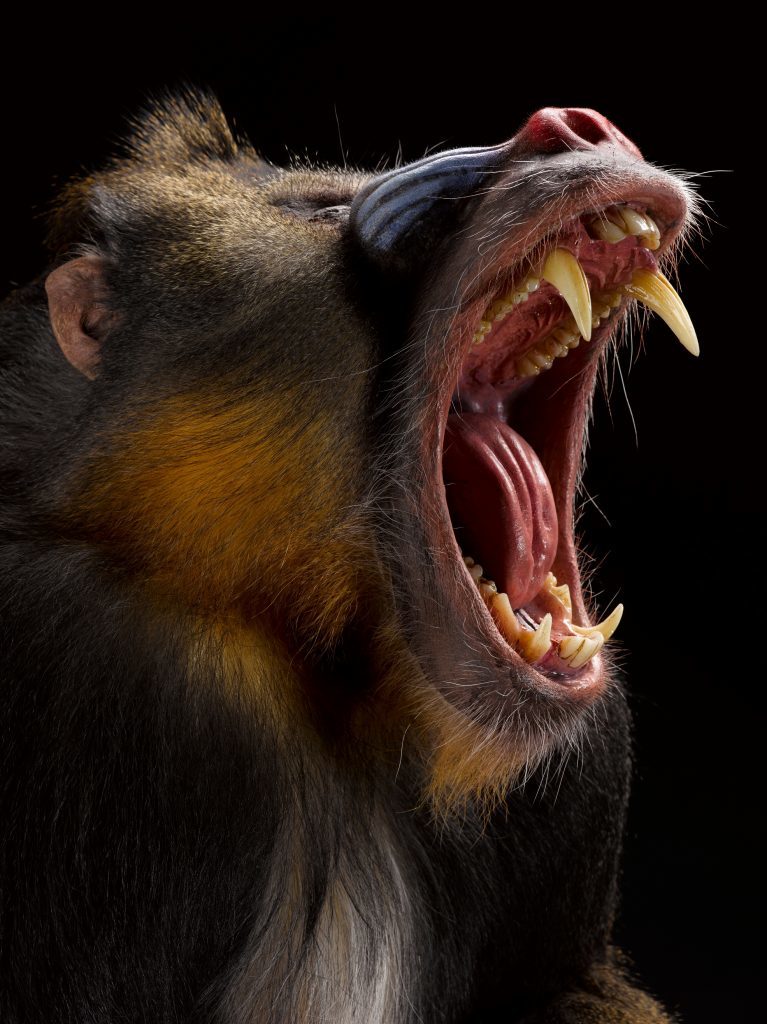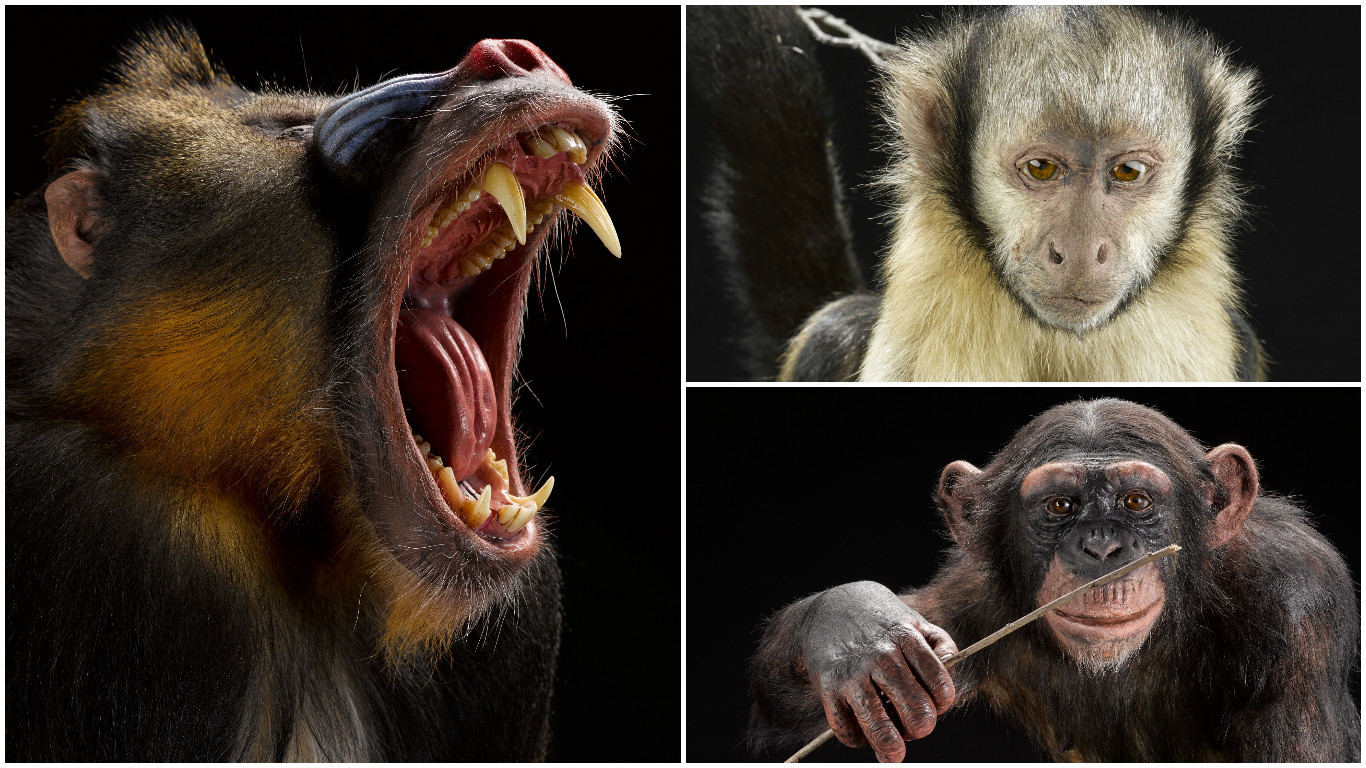
VISITORS have the chance to explore their family tree at Monkey Business, a major exhibition now open at the National Museum Of Scotland in Edinburgh.
The first of its kind worldwide, it features more than 50 spectacular, specially-commissioned taxidermy specimens of monkeys, apes, lemurs, lorises and bushbabies.
The exhibition is the first to show primates behaving as if they were in the wild.
It explores how primates’ bodies have evolved to move around, feed, communicate with each other and sense their environments. It reveals their complex social systems and looks at the relationship between primates and humans today.
The exhibition runs until April 23 next year.
Dr Andrew Kitchener, principal curator of vertebrate biology, tells us 10 fascinating facts about our closest animal relatives.
DON’T GET TOO CLOSE
Slow lorises may be very cute, but they have a venomous bite which can cause anaphylactic shock in some people.
The slow loris has a gland on its wrist which secretes a toxin. It rubs this gland on the sides of its head and also licks it so that the toxin mixes with its saliva. It’s thought that the toxin deters parasites and predators, and is used in fights with rival lorises and to kill prey.
Together with its head markings and movements, slow lorises may even mimic venomous cobras. Videos showing them lift their arms up apparently to be tickled have gone viral on the internet. However, they are in fact raising their arms to activate their venom glands.
DON’T TICKLE THEIR FANCY
Slow lorises may be very cute, but they have a venomous bite which can cause anaphylactic shock in some people. The slow loris has a gland on its wrist which secretes a toxin. It rubs this gland on the sides of its head and also licks it so that the toxin mixes with its saliva. It’s thought that the toxin deters parasites and predators, and is used to kill prey and in fights with rival lorises. Together with its head markings and movements, slow lorises may even mimic venomous cobras. Videos of slow lorises appearing to lift their arms up to be tickled have gone viral on the internet. However, the animals do not like to be tickled and are in fact raising their arms to activate their venom glands.
THE EYES HAVE IT
A tarsier’s eyes are bigger than its brain. This nocturnal hunter has the largest eyes of any mammal relative to its body weight and if humans had the same size of eyes relative to our own faces, they would be as big as grapefruits.
Because it hunts at night, its enormous eyes help it to trap the maximum available light. Unlike other primates, the tarsier’s eyes are fixed in their sockets, so they have to rotate their heads in order to see around them. Much like an owl, they can rotate their heads almost 180 degrees in either direction.
TOOLS OF THE TRADE
Capuchin monkeys are famous for their ability to make and use tools.
They have been known to create their own insect repellent from crushed millipedes and to use stray human hairs as dental floss. They are skilled at using tools, using huge rocks to crack open nuts and seeds, inserting branches into cracks to find food and removing toxic hairs from caterpillars by rubbing them against branches.
They have also been spotted banging stones together to alert one another to nearby predators.
VERY FUNKY GIBBONS
Gibbons can swing an incredible 12 metres in a single movement.
They are capable of travelling huge distances without ever touching the ground, swinging the distance of a marathon every fortnight. While they are incredibly dextrous, they are prone to accidents and around one in three have skeletal fractures. However, their bones heal quickly and they can still swing through trees using one arm.
THE DATING GAME
Squirrel monkeys of the rainforests of South and Central America live in large groups of 20 to 40 animals.
Male monkeys are normally outnumbered by females and their youngsters.
And they have to live on the edge of the group for most of the year. The females actually beat them up if they try to come close.
In the breeding season there is a lot of competition between males as to who will be the favoured mate. Males have to fatten up to be attractive to the ladies, adding 20% to their body weight just to get noticed.
ODDEST OF THE ODD
The aye-aye is the strangest primate in the world. This lemur hunts its prey by tapping on trees with its long, slender middle finger, while it listens with its large, bat-like ears for insect larvae in burrows inside.
It can detect grubs two centimetres below the surface of the wood.
When it locates its prey, it bites through the bark and uses its long middle finger with its claw-like fingernail to retrieve it.
SO CLOSE TO US
Chimpanzees are our closest relatives, sharing about 98% of their DNA with us. They live in complex social groups of males, females and their young. Like humans, watching others, particularly mum, is vital in learning survival skills for later life.
Although we think of chimpanzees as mainly eating fruits, leaves and insects, they have a taste for meat.
Chimpanzees have learned to hunt in groups to catch monkeys. Some chase the monkeys through the trees, while others wait in ambush to head them off as they try to escape. Everyone joins in to grab some meat after the kill.
BIG BEASTS
The mandrill lives in the tropical rainforests of west central Africa. It is the largest monkey in the world, weighing up to 38kg.
Charles Darwin observed that “no other member in the whole class of mammals is coloured in so extraordinary a manner”.
Males have blue and red skin on their faces; these colours change depending on their moods.
Male mandrills have huge canine teeth that grow up to 6.5cm long. Females aren’t interested in any males with canines shorter than 3cm.
SCENT OF SUCCESS
Many primates have large, canine teeth for settling disputes between rivals. Ring-tailed lemurs have a different way of sorting out who is boss, reducing the risk of injury in disputes between neighbouring groups. Male ring-tailed lemurs have large scent glands on their wrists. They rub their stripy tails between their wrists, transferring the pungent scent on to their tails. In a stand-off between rivals, males flick their tails at each other in a ‘stink fight’ until one of them backs off.
SLEEP LESSONS
One of the smallest primates in the world, the fat-tailed dwarf lemur is one of the few primates which hibernate. In preparation for hibernation, which lasts around seven months, it increases its body weight by up to 40% by gorging on sugary fruits and storing fat in its tail. It hibernates in tree holes, getting all the food and water it needs from its tail. By the time it emerges from its torpor, it may have lost up to half of its body weight. Scientists have suggested that lessons learned from the hibernation of fat-tailed dwarf lemurs could be applied to another primate: humans. Induced hibernation in humans could have applications ranging from heart surgery to deep-space travel.
Monkey Business is at the National Museum of Scotland from 9 December 2016 to 23 April 2017. For more information visit www.nms.ac.uk/monkeybusiness
READ MORE
Monkeying around in the Scottish countryside at Loch Lomond Shores’ Go Ape
Hippomania: The early days of London Zoo

Enjoy the convenience of having The Sunday Post delivered as a digital ePaper straight to your smartphone, tablet or computer.
Subscribe for only £5.49 a month and enjoy all the benefits of the printed paper as a digital replica.
Subscribe